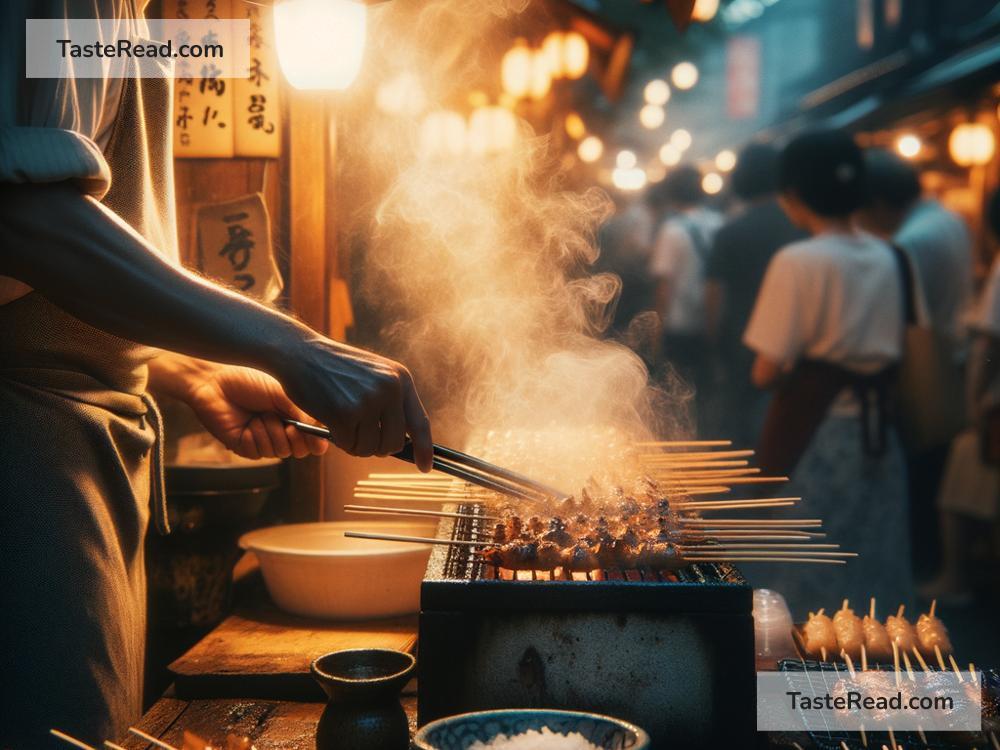The History of Japanese Yakitori: A Delicious Journey
If you’ve ever eaten Japanese food, chances are you’ve heard about Yakitori. This popular dish is made by grilling pieces of meat, usually chicken, on skewers. But Yakitori is more than just grilled chicken—it’s an important part of Japan’s history, culture, and cuisine. Let’s take a journey to learn how Yakitori became the delicious treat we know today.
What Is Yakitori?
Before diving into its history, let’s talk about what Yakitori actually is. The word “Yakitori” comes from two Japanese words: “yaki” (meaning “grilled”) and “tori” (meaning “bird”). Together, it literally means “grilled bird.” Although chicken is the most common meat used for Yakitori, other types of meat, like pork or beef, are sometimes used too.
Chefs carefully prepare Yakitori by cutting the meat into small, bite-sized pieces. The pieces are then skewered onto bamboo sticks and grilled over charcoal. The smoky flavor from the charcoal gives Yakitori its special taste. The skewers are usually seasoned with either salt (shio) or a sweet soy-based sauce (tare).
Now that we know what Yakitori is, let’s explore its fascinating history.
The Early History of Yakitori
The origins of Yakitori date back hundreds of years, but it wasn’t always the dish we know today. In ancient Japan (before the 1600s), eating meat wasn’t very common. Many people followed Buddhism, which discouraged eating animals, especially four-legged creatures like cows and pigs. Chicken, however, wasn’t as strictly prohibited.
While people occasionally ate chicken, it was far from being a staple food. In fact, chickens were mostly kept for their eggs, not their meat. Eating grilled chicken skewers was rare during these early times.
Things Begin to Change
During the Edo period (1603–1868), Japan’s culture, economy, and food started to change. Cities grew larger, and street food became more popular among the growing urban population. Small food stalls were set up, and sellers cooked simple dishes for busy workers. Though grilled skewers made their appearance during this time, they were often made with fish or vegetables instead of chicken.
It wasn’t until the second half of the Edo period that chicken skewers started to gain popularity. This shift happened partly because the meat supply increased, and cooking techniques improved. People discovered that grilling chicken made it tender and flavorful.
Yakitori in Modern Times
By the Meiji era (1868–1912), Japan experienced major changes. The country opened up to Western influence, and eating meat became much more acceptable. By this time, chicken was widely recognized as a food source, and grilling it became a common cooking method.
Yakitori as we know it finally emerged in the early 20th century. In many places, small food stalls started selling affordable chicken skewers to busy workers and travelers. Since chicken was inexpensive, Yakitori became a popular snack for people on the go.
After World War II, Yakitori saw another big boost in popularity. During the post-war years, Japan was rebuilding its economy, and new food trends emerged. Yakitori stalls became even more common in cities, often popping up near train stations and markets. The dish was simple, delicious, and comforting during tough times.
Yakitori and Izakaya Culture
In the 1950s and beyond, Yakitori became closely connected to izakaya culture. Izakaya are Japanese pubs where people gather to drink alcohol and eat small dishes. Yakitori, served on skewers for easy eating, is a perfect match for beer or sake. Today, Yakitori and izakaya culture go hand in hand.
Chefs also began experimenting with Yakitori, creating new varieties of skewers. In addition to plain chicken skewers, chefs started using chicken parts like hearts (hāto), gizzards (sunagimo), and skin (kawa). They also introduced vegetables like green onions (negima) wrapped in chicken. This creativity made Yakitori more exciting and diverse.
Yakitori Around the World
In recent years, Yakitori has become popular outside Japan. Its simplicity and flavor appeal to people everywhere. Japanese restaurants around the world often include Yakitori on their menus, and food lovers enjoy the smoky grilled taste.
In some places, chefs fuse Yakitori with local ingredients and flavors to create unique dishes. For example, Yakitori might be served with spicy sauces or paired with unfamiliar vegetables. While traditional Japanese Yakitori is still beloved, these modern twists show how versatile the dish can be.
Conclusion
Yakitori has come a long way since its humble beginnings. From ancient Japan, where chicken was rarely eaten, to the bustling food stalls of the 20th century, Yakitori has grown into a dish full of flavor, history, and culture.
Today, Yakitori is more than just food—it’s an experience. Whether enjoyed at a lively izakaya or cooked at home, these flavorful skewers are a testament to Japan’s culinary creativity. As Yakitori continues to spread around the world, its rich history lives on, one delicious skewer at a time.
So the next time you bite into a piece of perfectly grilled Yakitori, take a moment to appreciate its journey. It’s not just chicken on a stick—it’s a slice of Japanese history you can savor!


